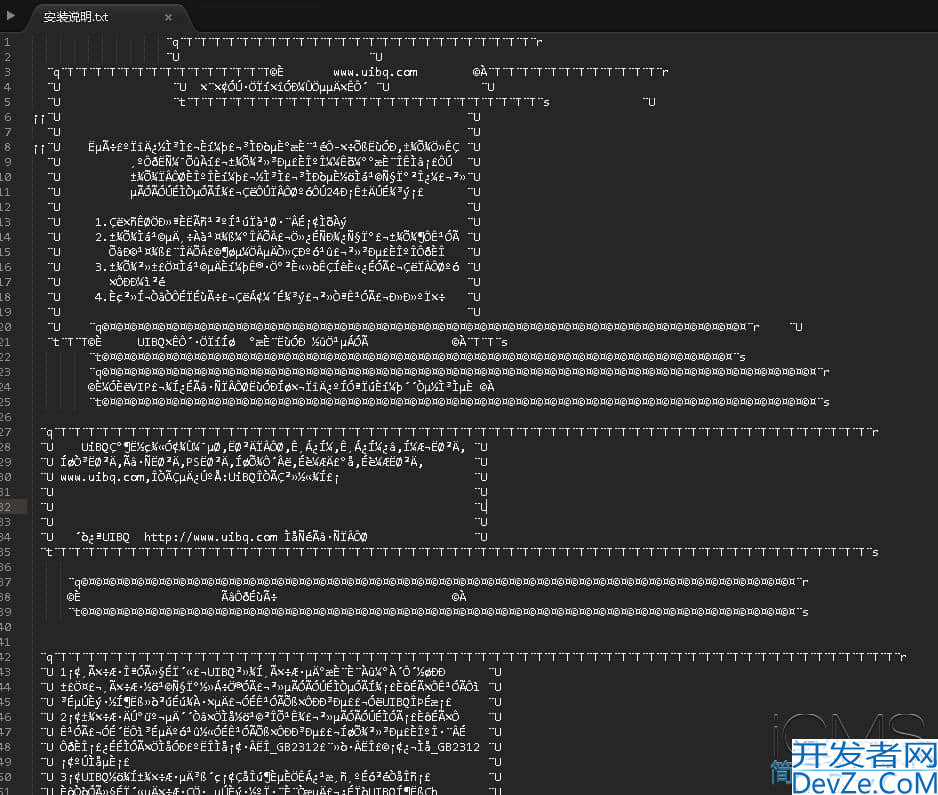SpringCache缓存抽象之CacheManager与自定义键生成方式
目录
- 一、Spring Cache基础架构
- 1.1 缓存抽象设计理念
- 1.2 核心组件概述
- 二、CacheManager深入解析
- 2.1 常用CacheManager实现
- 2.2 复合缓存策略
- 三、自定义键生成策略
- 3.1 默认键生成机制
- 3.2 自定义KeyGenerator实现
- 3.3 SpEL表达式定制缓存键
- 四、实践中的缓存设计
- 4.1 缓存一致性策略
- 总结
在高性能Java应用开发中,缓存是提升系统响应速度和减轻数据库负担的关键技术。Spring Framework提供了优雅的缓存抽象层,使开发者能够以声明式方式集成各种缓存实现。
一、Spring Cache基础架构
1.1 缓存抽象设计理念
Spring Cache的设计遵循了Spring一贯的理念:为特定技术提供高层次抽象,降低实现与业务代码的耦合度。缓存抽象层由注解驱动,支持声明式配置,大大简化了缓存操作的代码量。开发者只需关注缓存策略,无需编写重复的缓存逻辑。
这种设计使得切换不同的缓存提供商变得异常简单,增强了应用的可维护性与扩展性。
// 缓存抽象的关键注解示例
@Service
public class ProductService {
@Cacheable(value = "products", key = "#id")
public Product getProductById(Long id) {
// 方法调用将被缓存,相同参数的重复调用直接返回缓存结果
return productRepository.findById(id).orElse(null);
}
@CacheEvict(value = "products", key = "#product.id")
public void updateProduct(Product product) {
// 更新产品信息并清除对应的缓存条目
productRepository.save(product);
}
@CachePut(value = "products", key = "#result.id")
public Product createProduct(Product product) {
// 创建产品并更新缓存,同时返回结果
return productRepository.save(product);
}
@CacheEvict(value = "products", allEntries = true)
public void clearProductCache() {
// 清除products缓存中的所有条目
System.out.println("产品缓存已清空");
}
}
1.2 核心组件概述
Spring Cache架构由几个核心组件组成,各司其职又协同工作。Cache接口定义了缓存操作的基本行为;CacheManager负责创建、配置和管理Cache实例;KeyGenerator负责为缓存条目生成唯一键;CacheResolver在运行时决定使用哪个缓存。这些组件共同构成了灵活强大的缓存框架。其中,CacheManager是连接缓存抽象与具体实现的桥梁,是整个架构的核心。
// Spring Cache核心接口关系
public interface Cache {
// 缓存的名称,用于标识不同的缓存
String getName();
// 底层的原生缓存,可转换为特定实现
Object getNativeCache();
// 根据键获取缓存值
ValueWrapper get(Object key);
// 将值存入缓存
void put(Object key, Object value);
// 从缓存中移除指定键的条目
void evict(Object key);
// 清除缓存中的所有条目
void clear();
}
// CacheManager定义
public interface CacheManage编程客栈r {
// 获取指定名称的缓存
Cache getCache(String name);
// 获取所有缓存名称的集合
Collection<String> getCacheNames();
}
二、CacheManager深入解析
2.1 常用CacheManager实现
Spring框架提供了多种CacheManager实现,支持不同的缓存技术。ConcurrentMapCacheManager是基于ConcurrentHashMap的简单实现,适合开发和测试环境;EhCacheCacheManager集成了EhCache的高级特性;RedisCacheManager则提供了与Redis分布式缓存的集成,适用于生产环境。根据应用需求和性能要求,选择合适的CacheManager至关重要。每种实现都有其独特的配置方式和性能特点。
// 不同CacheManager的配置示例
@Configuration
@EnableCaching
public class CacheConfig {
// 简单内存缓存配置
@Bean
public CacheManager concurrentMapCacheManager() {
ConcurrentMapCacheManager cacheManager = new ConcurrentMapCacheManager();
cacheManager.setCacheNames(Arrays.asList("products", "customers"));
return cacheManager;
}
// Redis缓存配置
@Bean
public CacheManager redisCacheManager(RedisConnectionFactory connectionFactory) {
RedisCacheConfiguration config = RedisCacheConfiguration.defaultCacheConfig()
.entryTtl(Duration.ofMinutes(10)) // 设置缓存过期时间
.serializeKeysWith(RedisSerializationContext.SerializationPair
.fromSerializer(new StringRedisSerializer()))
.serializeValuesWith(RedisSerializationContext.SerializationPair
.fromSerializer(new GenericJackson2jsonRedisSerializer()));
return RedisCacheManager.builder(connectionFactory)
.cacheDefaults(config)
.withCacheConfiguration("products", RedisCacheConfiguration
.defaultCacheConfig().entryTtl(Duration.ofMinutes(5)))
.build();
}
// Caffeine缓存配置
@Bean
public CacheManager caffeineCacheManager() {
CaffeineCacheManager cacheManager = new CaffeineCacheManager();
// 为不同缓存设置不同的配置
cacheManager.setCacheSpecification("products=maximumSize=500,expireAfterWrite=5m");
cacheManager.setCacheSpecification("customers=maximumSize=1000,expireAfterWrite=10m");
return cacheManager;
}
}
2.2 复合缓存策略
在复杂应用中,单一缓存策略往往无法满足所有需求。Spring提供了CompositeCacheManager,允许组合多个CacheManager,构建多级缓存系统。例如,可以组合本地缓存(Caffeine)与分布式缓存(Redis),前者提供高速访问,后者确保集群一致性。复合策略需要合理规划缓存数据流向和一致性维护机制,避免数据不一致问题。
// 复合缓存管理器配置
@Bean
public CacheManager compositeCacheManager(
CaffeineCacheManager caffeineCacheManager,
RedisCacheManager redisCacheManager) {
// 创建复合缓存管理器
CompositeCacheManager compositeCacheManager = new CompositeCacheManager(
caffeineCacheManager,
redisCacheManager
);
// 设置回退机制,当指定缓存不存在时创建默认缓存
compositeCacheManager.setFallbackToNoOpCache(true);
return compositeCacheManager;
}
// 缓存使用策略示例
@Service
public class TieredCacheService {
// 使用本地缓存,适合高频访问数据
@Cacheable(value = "localProducts", cacheManager = "caffeineCacheManager")
public Product getProductForFrontend(Long id) {
return productRepository.findById(id).orElse(null);
}
// 使用分布式缓存,适合集群共享数据
@Cacheable(value = "sharedProducts", cacheManager = "redisCacheManager")
public Product getProductForApi(Long id) {
return productRepository.findById(id).orElse(null);
}
// 两级缓存同步更新
@Caching(evict = {
@CacheEvict(value = "localProducts", key = "#product.id", cacheManager = "caffeineCacheManager"),
@CacheEvict(value = "sharedProducts", key = "#product.id", cacheManager = "redisCacheManager")
})
public void updateProduct(Product product) {
productRepository.save(product);
}
}
三、自定义键生成策略
3.1 默认键生成机制
Spring Cache默认使用SimpleKeyGenerator生成缓存键。对于无参方法,使用SimpleKey.EMPTY作为键;对于单参数方法,直接使用该参数作为键;对于多参数方法,使用包含所有参数的SimpleKey实例。这种机制简单实用,但在复杂场景下可能导致键冲突或难以管理。默认键生成逻辑缺乏对象属性选择能力,无法处理包含非缓存相关字段的复杂对象。
// 默认键生成器实现逻辑示意
public class SimpleKeyGenerator implements KeyGenerator {
@Override
public Object generate(Object target, Method method, Object... params) {
if (params.length == 0) {
return SimpleKey.EMPTY;
}
if (params.length == 1) {
Object param = params[0];
if (param != null && !param.getClass().isArray()) {
return param;
}
}
return new SimpleKey(params);
}
}
// 默认键生成使用示例
@Cacheable("products") // 使用默认键生成器
public Product getProduct(Long id, String region) {
// 缓存键将是SimpleKey(id, region)
return productRepository.findByIdAndRegion(id, region);
}
3.2 自定义KeyGenerator实现
自定义KeyGenerator可以精确控制缓存键的生成逻辑。可以根据业务需求选择特定字段组合、应用哈希算法或添加前缀。例如,对于复杂查询参数,可以提取核心字段构建键;对于分区数据,可以添加租户ID前缀避免冲突。自定义生成器通过@Bean注册,并在@Cacheable注解中通过keyGenerator属性引用。
// 自定义键生成器实现
@Component("customKeyGenerator")
public class CustomKeyGenerator implements KeyGenerator {
@Override
public Object generate(Object target, Method method, Object... params) {
StringBuilder keyBuilder = new StringBuilder();
// 添加类名和方法名前缀
keyBuilder.append(target.getClass().getSimpleName())
.append(".")
.append(method.getName());
// 处理参数
for (Object param : pahttp://www.devze.comrams) {
keyBuilder.append(":");
if (param instanceof Product) {
// 对于产品对象,只使用ID和名称
Product product = (Product) param;
keyBuilder.append("Product[")
.append(product.getId())
.append(",")
.append(product.getName())
.append("]");
} else {
// 其他类型直接使用toString
keyBuilder.append(param);
}
}
return keyBuilder.toString();
}
}
// 在配置类中注册
@Bean
public KeyGenerator customKeyGenerator() {
return new CustomKeyGenerator();
}
// 使用自定义键生成器
@Cacheable(value = "products", keyGenerator = "customKeyGenerator")
public List<Product> findProductsByCategory(String category, boolean includeInactive) {
// 键将类似于: "ProductService.findProductsByCategory:Electronics:false"
return productRepository.findByCategory(category, includeInactive);
}
3.3 SpEL表达式定制缓存键
Spring Expression Language (SpEL)提供了灵活的缓存键定制方式,无需创建额外类。通过key属性指定表达式,可以从方法参数、返回值或上下文环境构建键。SpEL支持字符串操作、条件逻辑和对象导航,能够处理复杂的键生成需求。在多租户系统中,可结合SecurityContext获取租户信息构建隔离的缓存键。
// SpEL表达式缓存键示例
@Service
public class AdvancedCacheService {
// 使用方法参数组合构建键
@Cacheable(编程客栈value = "productSearch", key = "#category + '_' + #minPrice + '_' + #maxPrice")
public List<Product> searchProducts(String category, Double minPrice, Double maxPrice) {
return productRepository.search(category, minPrice, maxPrice);
}
// 使用对象属性
@Cacheable(value = "userProfile", key = "#user.id + '_' + #user.role")
public UserProfile getUserProfile(User user) {
return profileService.loadProfile(user);
}
// 使用条件表达式
@Cacheable(value = "reports",
key = "#reportType + (T(java.lang.String).valueOf(#detailed ? '_detailed' : '_summary'))",
condition = "#reportType != 'REALTIME'") // 实时报告不缓存
public Report generateReport(String reportType, boolean detailed) {
return reportGenerator.create(reportType, detailed);
}
// 结合内置对象和方法
@Cacheable(value = "securedData",
key = "#root.target.getTenantPrefix() + '_' + #dataId",
unless = "#result == null")
public SecuredData getSecuredData(String dataId) {
return securityRepository.findData(dataId);
}
// 辅助方法,用于SpEL表达式中
public String getTenantPrefix() {
return SecurityContextHolder.getContext().getAuthentication().getName() + "_tenant"js;
}
}
四、实践中的缓存设计
4.1 缓存一致性策略
缓存一致性是系统设计的关键挑战。在Spring Cache中,主要通过@CacheEvict和@CachePut维护一致性。时间驱动策略通过设置TTL控制缓存过期;事件驱动策略在数据变更时主动更新缓存。复杂系统中,可以结合消息队列实现跨服务缓存同步。定期刷新关键缓存也是保障数据新鲜度的有效手段。不同场景需要权衡一致性与性能。
// 缓存一致性维护示例
@Service
public class ConsistentCacheService {
@Autowired
private ApplicationEventPublisher eventPublisher;
// 读取缓存数据
@Cacheable(value = "productDetails", key = "#id")
public ProductDetails getProductDetails(Long id) {
return productDetailsRepository.findById(id).orElse(null);
}
// 更新并刷新缓存
@Transactional
public ProductDetails updateProductDetails(ProductDetails details) {
// 先保存数据
android ProductDetails saved = productDetailsRepository.save(details);
// 发布缓存更新事件
eventPublisher.publishEvent(new ProductCacheInvalidationEvent(saved.getId()));
return saved;
}
// 事件监听器,处理缓存刷新
@EventListener
public void handleProductCacheInvalidation(ProductCacheInvalidationEvent event) {
clearProductCache(event.getProductId());
}
// 清除特定产品缓存
@CacheEvict(value = "productDetails", key = "#id")
public void clearProductCache(Long id) {
// 方法体可以为空,注解处理缓存清除
System.out.println("产品缓存已清除: " + id);
}
// 缓存事件定义
public static class ProductCacheInvalidationEvent {
private final Long productId;
public ProductCacheInvalidationEvent(Long productId) {
this.productId = productId;
}
public Long getProductId() {
return productId;
}
}
}
总结
Spring Cache抽象层通过统一接口和声明式注解,为Java应用提供了强大而灵活的缓存支持。CacheManager作为核心组件,连接缓存抽象与具体实现,支持从简单内存缓存到复杂分布式缓存的各种场景。
自定义键生成策略,无论是通过KeyGenerator实现还是SpEL表达式定制,都为精确控制缓存行为提供了有力工具。
在实际应用中,合理选择CacheManager、设计缓存键策略并维护缓存一致性,是构建高性能缓存系统的关键。
以上为个人经验,希望能给大家一个参考,也希望大家多多支持编程客栈(www.devze.com)。







 加载中,请稍侯......
加载中,请稍侯......
精彩评论